Cell Biology Online Test 7th Science Lesson 10 Questions in English
Cell Biology Online Test 7th Science Lesson 10 Questions in English
Cell Biology Online Test 7th Science Lesson 10 Questions in English
Quiz-summary
0 of 39 questions completed
Questions:
- 1
- 2
- 3
- 4
- 5
- 6
- 7
- 8
- 9
- 10
- 11
- 12
- 13
- 14
- 15
- 16
- 17
- 18
- 19
- 20
- 21
- 22
- 23
- 24
- 25
- 26
- 27
- 28
- 29
- 30
- 31
- 32
- 33
- 34
- 35
- 36
- 37
- 38
- 39
Information
Cell Biology Online Test 7th Science Lesson 10 Questions in English
You have already completed the quiz before. Hence you can not start it again.
Quiz is loading...
You must sign in or sign up to start the quiz.
You have to finish following quiz, to start this quiz:
Results
0 of 39 questions answered correctly
Your time:
Time has elapsed
You have reached 0 of 0 points, (0)
| Average score |
|
| Your score |
|
Categories
- Not categorized 0%
| Pos. | Name | Entered on | Points | Result |
|---|---|---|---|---|
| Table is loading | ||||
| No data available | ||||
| 1 | KAVINKUMAR | 2024/10/05 11:35 AM | 38 | 97.44 % |
| 2 | Hemalatha P | 2025/01/19 5:18 PM | 33 | 84.62 % |
| 3 | Aarthi | 2024/11/06 7:36 AM | 22 | 56.41 % |
| 4 | Aarthi | 2024/11/29 5:08 PM | 16 | 41.03 % |
- 1
- 2
- 3
- 4
- 5
- 6
- 7
- 8
- 9
- 10
- 11
- 12
- 13
- 14
- 15
- 16
- 17
- 18
- 19
- 20
- 21
- 22
- 23
- 24
- 25
- 26
- 27
- 28
- 29
- 30
- 31
- 32
- 33
- 34
- 35
- 36
- 37
- 38
- 39
- Answered
- Review
-
Question 1 of 39
1. Question
1. Salmonella species is a_____
Correct
Explanation
Bacteria are micro-organisms that can be seen only under microscope and not seen through naked
eyes. Salmonella species is a Bacteria that can cause food-borne infectionIncorrect
Explanation
Bacteria are micro-organisms that can be seen only under microscope and not seen through naked
eyes. Salmonella species is a Bacteria that can cause food-borne infection -
Question 2 of 39
2. Question
2. The basic functional unit of an organism is called____
Correct
Explanation
The basic functional unit of an organism is called, a cell. Structure of a cell represent the
arrangement of parts or organelles in a cell. Function is the activity of each part or organelle in a
cell. Cells are the basic building blocks of an organism.Incorrect
Explanation
The basic functional unit of an organism is called, a cell. Structure of a cell represent the
arrangement of parts or organelles in a cell. Function is the activity of each part or organelle in a
cell. Cells are the basic building blocks of an organism. -
Question 3 of 39
3. Question
3. Which of the following statement is correct?
1) Some simple organisms, are made up of only one cell, called as unicellular organisms
2) They can be seen with naked eyes
3) There are many single – celled microscopic organisms.Correct
Explanation
Some simple organisms, are made up of only one cell. They are called unicellular organisms, which
can be seen with the help of a microscope. There are many single – celled microscopic organisms.Incorrect
Explanation
Some simple organisms, are made up of only one cell. They are called unicellular organisms, which
can be seen with the help of a microscope. There are many single – celled microscopic organisms. -
Question 4 of 39
4. Question
4. Which of the following are single cell organisms?
1) Amoeba
2) Chlamydomonas
3) BacteriaCorrect
Explanation
Chlamydomonas and an Amoeba, a single-celled organism which carryout entire functions. The
body of all organisms are made up of tiny building blocks called, cells. Bacteria are also one celled
unicellular organism.Incorrect
Explanation
Chlamydomonas and an Amoeba, a single-celled organism which carryout entire functions. The
body of all organisms are made up of tiny building blocks called, cells. Bacteria are also one celled
unicellular organism. -
Question 5 of 39
5. Question
5. Arrange the following in order:
1) Organ
2) Organ system
3) Cell
4) TissueCorrect
Explanation
The cells are organized into tissues, organs and organ systems in a multicellular organism.
Macroscopic organisms are visible and consists of many cells. The body of macroscopic organisms
involves various functions.Incorrect
Explanation
The cells are organized into tissues, organs and organ systems in a multicellular organism.
Macroscopic organisms are visible and consists of many cells. The body of macroscopic organisms
involves various functions. -
Question 6 of 39
6. Question
6. Which of the following are organ systems?
1) Respiratory system
2) Excretory system
3) Digestive systemCorrect
Explanation
Many cells function together to form tissues, different tissues combined together to form an organ
and different organs to form an organ system, which leads to form an organ. Many types of organ systems function together in a body, e.g. respiratory system, digestive system, excretory system,
circulatory system etc.Incorrect
Explanation
Many cells function together to form tissues, different tissues combined together to form an organ
and different organs to form an organ system, which leads to form an organ. Many types of organ systems function together in a body, e.g. respiratory system, digestive system, excretory system,
circulatory system etc. -
Question 7 of 39
7. Question
7. Which of the following is not included in respiratory system?
Correct
Explanation
Many organs together form an organ system, which is concerned with a specific function. For
example, Respiratory system, which has organs like nostrils, nasal chamber, wind pipe and lungs
that helps in the process of respirationIncorrect
Explanation
Many organs together form an organ system, which is concerned with a specific function. For
example, Respiratory system, which has organs like nostrils, nasal chamber, wind pipe and lungs
that helps in the process of respiration -
Question 8 of 39
8. Question
8. Which of the following does the function of conduction of water, mineral and also fixation?
1) Primary roots
2) Secondary roots
3) Tertiary rootsCorrect
Explanation
In a plant, the root system consists of primary root, secondary root and tertiary root, which does
the function of conduction of water, mineral and also fixation.Incorrect
Explanation
In a plant, the root system consists of primary root, secondary root and tertiary root, which does
the function of conduction of water, mineral and also fixation. -
Question 9 of 39
9. Question
9. Which of the following is odd on related to plants?
Correct
Explanation
A collection of different tissues worked together to perform a specific function or functions is
called an organ. Human body has different organs like stomach, eye, heart, lungs etc., are made up
of different type of tissues. Plants have organs such as leaves, stems, and roots.Incorrect
Explanation
A collection of different tissues worked together to perform a specific function or functions is
called an organ. Human body has different organs like stomach, eye, heart, lungs etc., are made up
of different type of tissues. Plants have organs such as leaves, stems, and roots. -
Question 10 of 39
10. Question
10. Which of the following statement is correct?
1) Tissue is a group of cells, organized for a specific function.
2) Human and other animals are made up of nervous, epithelial, connective and muscle
tissues.
3) Plants have transport, protective and ground tissues.Correct
Explanation
Tissue is a group of cells, organized for a specific function. Tissues have following features like
same shaped cells or different shaped cells to perform a common function. Human and other
animals are made up of nervous, epithelial, connective and muscle tissues. Plants have transport,
protective and ground tissues.Incorrect
Explanation
Tissue is a group of cells, organized for a specific function. Tissues have following features like
same shaped cells or different shaped cells to perform a common function. Human and other
animals are made up of nervous, epithelial, connective and muscle tissues. Plants have transport,
protective and ground tissues. -
Question 11 of 39
11. Question
11. Assertion(A): Our body is made up of many different kinds of cells.
Reason(R): Each type of cell is specialized to perform a specific function.
Correct
Explanation
Our body is made up of many different kinds of cells. Each type of cell is specialized to perform a
specific function. Depending on the function, cell has specific shape, size and may have some
components which other type of cells do not have.Incorrect
Explanation
Our body is made up of many different kinds of cells. Each type of cell is specialized to perform a
specific function. Depending on the function, cell has specific shape, size and may have some
components which other type of cells do not have. -
Question 12 of 39
12. Question
12. Which of the following statement is incorrect?
1) Inside a cell, there are many tiny structures called cell organelles
2) They work to bring in food supplies, get rid of waste, protection and repair of the cell, and
help it to grow and reproduce.Correct
Explanation
Inside a cell, there are many tiny structures called cell organelles. These organelles are responsible
for providing needs of the cell. They work to bring in food supplies, get rid of waste, protection and repair of the cell, and help it to grow and reproduce. Each one has a specific function to do for the
cell.Incorrect
Explanation
Inside a cell, there are many tiny structures called cell organelles. These organelles are responsible
for providing needs of the cell. They work to bring in food supplies, get rid of waste, protection and repair of the cell, and help it to grow and reproduce. Each one has a specific function to do for the
cell. -
Question 13 of 39
13. Question
13. Which of the following is not found in Prokaryotes?
Correct
Explanation
As we have mentioned before, all cells have some common structure.
These are 1. Cell membrane 2. Cytoplasm, and 3. Nucleus (In most eukaryotic cells)
Nucleus not found in prokaryotes.Incorrect
Explanation
As we have mentioned before, all cells have some common structure.
These are 1. Cell membrane 2. Cytoplasm, and 3. Nucleus (In most eukaryotic cells)
Nucleus not found in prokaryotes. -
Question 14 of 39
14. Question
14. The boundary of an animal cell is_____
Correct
Explanation
The boundary of an animal cell is the plasma membrane, which is also called as cell membrane.
All animal and plant cells are enclosed or surrounded by a cell membrane.Incorrect
Explanation
The boundary of an animal cell is the plasma membrane, which is also called as cell membrane.
All animal and plant cells are enclosed or surrounded by a cell membrane. -
Question 15 of 39
15. Question
15. Which of the following statement is correct?
1) Animal cells often have an irregular shape
2) Plant cells have a much more regular and rigid shapeCorrect
Explanation
All animal and plant cells are enclosed or surrounded by a cell membrane as you learned before.
However, as you might have noticed previously that, animal cells often have an irregular shape,
whereas plant cells have a much more regular and rigid shape.Incorrect
Explanation
All animal and plant cells are enclosed or surrounded by a cell membrane as you learned before.
However, as you might have noticed previously that, animal cells often have an irregular shape,
whereas plant cells have a much more regular and rigid shape. -
Question 16 of 39
16. Question
16. What is the function of cell wall in plants?
Correct
Explanation
Plant cells have an additional layer on the outer side of the cell membrane. This is called as the cell
wall, that provides a frame work for support and stabilityIncorrect
Explanation
Plant cells have an additional layer on the outer side of the cell membrane. This is called as the cell
wall, that provides a frame work for support and stability -
Question 17 of 39
17. Question
17. Which of the following statement is correct?
1) The cell wall is formed from various compounds, the main one being cellulose.
2) Cellulose allows the plant to remain rigid and upright even if it grows to great heights
3) Each cell is interconnected with its neighbouring cells through openings called
Plasmodesmata.Correct
Explanation
The cell wall is formed from various compounds, the main one being cellulose. Cellulose helps to
maintain the shape of the plant cell. This allows the plant to remain rigid and upright even if it
grows to great heights. Each cell is interconnected with its neighbouring cells through openings
called Plasmodesmata.Incorrect
Explanation
The cell wall is formed from various compounds, the main one being cellulose. Cellulose helps to
maintain the shape of the plant cell. This allows the plant to remain rigid and upright even if it
grows to great heights. Each cell is interconnected with its neighbouring cells through openings
called Plasmodesmata. -
Question 18 of 39
18. Question
18. Which of the following statement is incorrect?
1) Chloroplast is responsible for photosynthesis
2) Vacuoles are filled with both organic and inorganic moleculesCorrect
Explanation
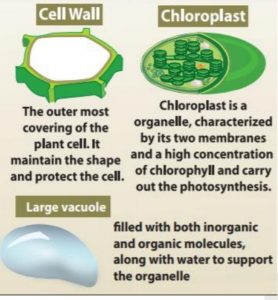 Incorrect
Incorrect
Explanation

-
Question 19 of 39
19. Question
19. Which of the following is involved in the development of spindle fibres?
Correct
Explanation
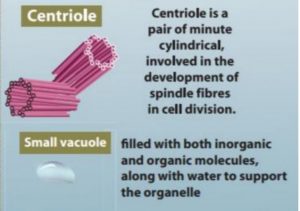 Incorrect
Incorrect
Explanation

-
Question 20 of 39
20. Question
20. Which of the following is the control centre of the cell?
Correct
Explanation
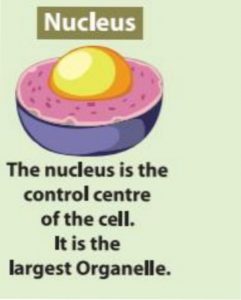 Incorrect
Incorrect
Explanation

-
Question 21 of 39
21. Question
21. Which of the following is contained in Ribosome?
Correct
Explanation
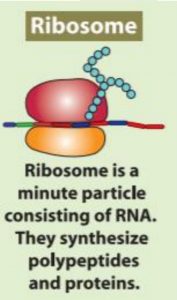 Incorrect
Incorrect
Explanation

-
Question 22 of 39
22. Question
22. Which of the following is not included in cytoplasm?
Correct
Explanation
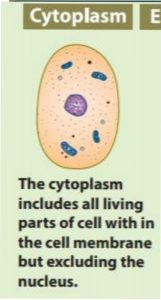 Incorrect
Incorrect
Explanation

-
Question 23 of 39
23. Question
23. Which of the following is involved in protein and lipid synthesis?
Correct
Explanation
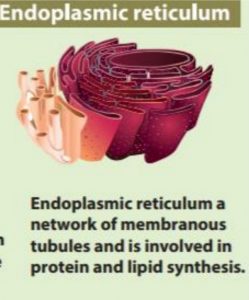 Incorrect
Incorrect
Explanation

-
Question 24 of 39
24. Question
24. Which of the following makes ATP?
Correct
Explanation
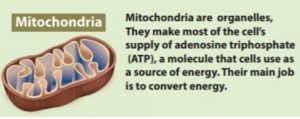 Incorrect
Incorrect
Explanation

-
Question 25 of 39
25. Question
25. What is the shape of Epithelial cells?
Correct
Explanation
 Incorrect
Incorrect
Explanation

-
Question 26 of 39
26. Question
26. __________ are specialized to carry and conduct messages that coordinate the functions of the
bodyCorrect
Explanation
 Incorrect
Incorrect
Explanation

-
Question 27 of 39
27. Question
27. What is the shape of RBC?
1) Round
2) Rectangular
3) Disc
4) BiconcaveCorrect
Explanation
 Incorrect
Incorrect
Explanation

-
Question 28 of 39
28. Question
28. Assertion(A): Stem Cells are utilized by the Scientist and Medicos, to cure and prevent some
diseases like Spinal cord injuryReason(R): Stem cells are quite amazing as they can divide and multiply while at the same time
with their ability to develop into any other type of cellCorrect
Explanation
Stem cells are quite amazing as they can divide and multiply while at the same time with their
ability to develop into any other type of cell. Embryonic stem cells are very special as they can
become absolutely any type of cell in the body, for example, blood cell, nerve cell, muscle cell or
gland cell. So, they are utilized by the Scientist and Medicos, to cure and prevent some diseases
like Spinal cord injuryIncorrect
Explanation
Stem cells are quite amazing as they can divide and multiply while at the same time with their
ability to develop into any other type of cell. Embryonic stem cells are very special as they can
become absolutely any type of cell in the body, for example, blood cell, nerve cell, muscle cell or
gland cell. So, they are utilized by the Scientist and Medicos, to cure and prevent some diseases
like Spinal cord injury -
Question 29 of 39
29. Question
29. What % of water in cytosol?
Correct
Explanation
The cytoplasm includes all living parts of the cell with in the cell membrane, excluding the nucleus.
The cytoplasm is made up of the cytosol and cell organelles. The cytosol is a watery, jellylike
medium made up of 70% – 90% water and usually colourless.Incorrect
Explanation
The cytoplasm includes all living parts of the cell with in the cell membrane, excluding the nucleus.
The cytoplasm is made up of the cytosol and cell organelles. The cytosol is a watery, jellylike
medium made up of 70% – 90% water and usually colourless. -
Question 30 of 39
30. Question
30. Which of the following are included in cell?
1) Vacuole
2) Chloroplast
3) MitochondriaCorrect
Explanation
Cell organelles and structures present in a cell are endoplasmic reticulum, vacuole, ribosome, golgi
body, lysosome, mitochondria, centriole, chloroplast, surrounded by plasma membrane and cell
wall.Incorrect
Explanation
Cell organelles and structures present in a cell are endoplasmic reticulum, vacuole, ribosome, golgi
body, lysosome, mitochondria, centriole, chloroplast, surrounded by plasma membrane and cell
wall. -
Question 31 of 39
31. Question
31. The material inside and outside the nuclear membrane is known as_____
Correct
Explanation
In particular, the material inside and outside the nuclear membrane is known as Protoplasm. The
fluid inside the nucleus is known as the nuclear fluid or nucleoplasm and outside the nucleus is
called as cytoplasm.Incorrect
Explanation
In particular, the material inside and outside the nuclear membrane is known as Protoplasm. The
fluid inside the nucleus is known as the nuclear fluid or nucleoplasm and outside the nucleus is
called as cytoplasm. -
Question 32 of 39
32. Question
32. Which of the following statement is correct?
1) Anaerobic respiratory reactions take place with-in the mitochondrion to release energy
2) Mitochondria is an oval or rod-shaped double membrane bounded organelle.
3) It is known as “the Power House” of the cellCorrect
Explanation
Mitochondria is an oval or rod-shaped double membrane bounded organelle. Aerobic respiratory
reactions take place with-in the mitochondrion to release energy. So, it is known as “the Power
House” of the cell. The energy produced within the mitochondrion is used for all the metabolic
activities of the cell.Incorrect
Explanation
Mitochondria is an oval or rod-shaped double membrane bounded organelle. Aerobic respiratory
reactions take place with-in the mitochondrion to release energy. So, it is known as “the Power
House” of the cell. The energy produced within the mitochondrion is used for all the metabolic
activities of the cell. -
Question 33 of 39
33. Question
33. Which of the following statement is correct?
1) Chloroplasts are the only cell organelles that can produce food from the sun energy
2) Chlorophyll can absorb radiant energy from the Sun and convert it to the chemical energy
which can be used by the plants and animals
3) Animal cells have chloroplasts and but are unable to do photosynthesisCorrect
Explanation
Chloroplasts are the only cell organelles that can produce food from the sun energy. Only plants
with chloroplast are able to do photosynthesis because they contain the very important green
pigment, chlorophyll. Chlorophyll can absorb radiant energy from the Sun and convert it to the
chemical energy which can be used by the plants and animals. Animal cells lack chloroplasts and
are unable to do photosynthesis.Incorrect
Explanation
Chloroplasts are the only cell organelles that can produce food from the sun energy. Only plants
with chloroplast are able to do photosynthesis because they contain the very important green
pigment, chlorophyll. Chlorophyll can absorb radiant energy from the Sun and convert it to the
chemical energy which can be used by the plants and animals. Animal cells lack chloroplasts and
are unable to do photosynthesis. -
Question 34 of 39
34. Question
34. As fruits ripen, chloroplasts change to_________
Correct
Explanation
Various range of these plastids impart different colours to various parts of plant. Chromoplast
impart colour to flower and fruits. As fruits ripen, chloroplasts change to chromoplasts. Starch is
converted to sugar.Incorrect
Explanation
Various range of these plastids impart different colours to various parts of plant. Chromoplast
impart colour to flower and fruits. As fruits ripen, chloroplasts change to chromoplasts. Starch is
converted to sugar. -
Question 35 of 39
35. Question
35. Which of the following are the functions of Golgi Complex?
1) Production of secretory substances
2) Packaging
3) SecretionCorrect
Explanation
Membrane bounded sacs are stacked on top of the other with associated secretory vesicles are
collectively known as Golgi complex.Functions of Golgi complex are the production of secretory substances, packaging and secretion. This is the secret behind the change in the colour and taste
of fruits.Incorrect
Explanation
Membrane bounded sacs are stacked on top of the other with associated secretory vesicles are
collectively known as Golgi complex.Functions of Golgi complex are the production of secretory substances, packaging and secretion. This is the secret behind the change in the colour and taste
of fruits. -
Question 36 of 39
36. Question
36. Which of the following is known as Suicidal Bag?
Correct
Explanation
Lysosome- “Suicidal Bag”
Everything I touch, I destroy You will find organelles called as lysosomes, which are very small to
view using a light microscope. They are the main digestive compartments of the cell. They lyse a
cell, hence they are called “suicidal bag”Incorrect
Explanation
Lysosome- “Suicidal Bag”
Everything I touch, I destroy You will find organelles called as lysosomes, which are very small to
view using a light microscope. They are the main digestive compartments of the cell. They lyse a
cell, hence they are called “suicidal bag” -
Question 37 of 39
37. Question
37. Which of the following is present in animals and absent in plants?
Correct
Explanation
Centrioles are generally found close to the nucleus and are made up of tube-like structures.
Centrioles or centrosomes are present only in animal cells and absent in plant cells. It helps in the
separation of chromosomes during cell division.Incorrect
Explanation
Centrioles are generally found close to the nucleus and are made up of tube-like structures.
Centrioles or centrosomes are present only in animal cells and absent in plant cells. It helps in the
separation of chromosomes during cell division. -
Question 38 of 39
38. Question
38. Which of the following helps in synthesis of protein?
Correct
Explanation
Rough endoplasmic reticulum is rough due to the ribosomes attached to the membrane. which
helps in the synthesis of proteinSmooth endoplasmic reticulum. It is a network of tubular sacs without ribosomes on the
membrane. They play a role in the synthesis of lipids, steroids and also transport them within the
cell.Incorrect
Explanation
Rough endoplasmic reticulum is rough due to the ribosomes attached to the membrane. which
helps in the synthesis of proteinSmooth endoplasmic reticulum. It is a network of tubular sacs without ribosomes on the
membrane. They play a role in the synthesis of lipids, steroids and also transport them within the
cell. -
Question 39 of 39
39. Question
39. Which of the following statement is correct?
1) Plant and animal cells have a nucleus inside the cytoplasm
2) During cell division, the chromatin body is organised into a chromosome.
3) One or two nucleolus and the chromatin body are present inside the nucleusCorrect
Explanation
Plant and animal cells have a nucleus inside the cytoplasm. It is surrounded by a nuclear envelope.
One or two nucleolus and the chromatin body are present inside the nucleus. During cell division,
the chromatin body is organised into a chromosome. Storage of genetic material and transfers
heredity characters from generation to generation are the functions of chromosome.Incorrect
Explanation
Plant and animal cells have a nucleus inside the cytoplasm. It is surrounded by a nuclear envelope.
One or two nucleolus and the chromatin body are present inside the nucleus. During cell division,
the chromatin body is organised into a chromosome. Storage of genetic material and transfers
heredity characters from generation to generation are the functions of chromosome.
Leaderboard: Cell Biology Online Test 7th Science Lesson 10 Questions in English
| Pos. | Name | Entered on | Points | Result |
|---|---|---|---|---|
| Table is loading | ||||
| No data available | ||||
| 1 | KAVINKUMAR | 2024/10/05 11:35 AM | 38 | 97.44 % |
| 2 | Hemalatha P | 2025/01/19 5:18 PM | 33 | 84.62 % |
| 3 | Aarthi | 2024/11/06 7:36 AM | 22 | 56.41 % |
| 4 | Aarthi | 2024/11/29 5:08 PM | 16 | 41.03 % |